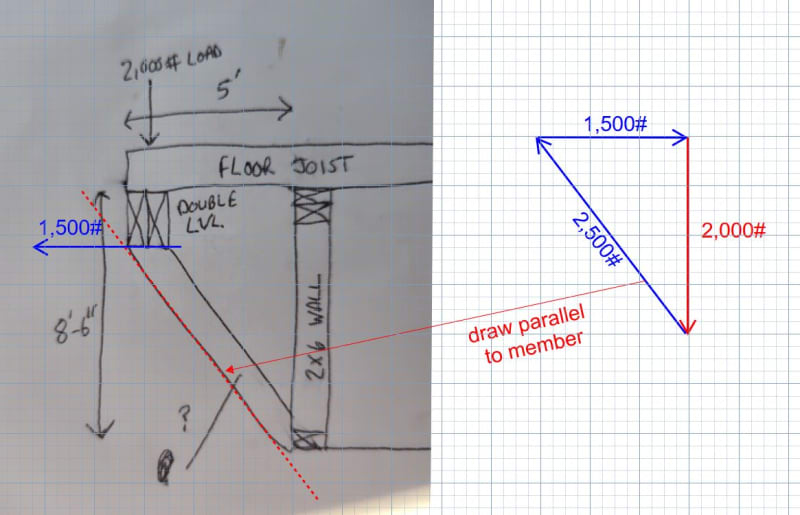I prepared a set of plans for a deck and the client and contractor change things during construction.
Attached is a picture.
Instead of cantilevering the floor joist out two feet they cantilevered them out 5 ft and now want to add live loads.
Therefore a double LVL beam will be installed at the end of the cantilever.
Each end of the LVL beam will have about a 2000 lb point load.
Due to the site slope the contractor would like to install angled support members instead of straight up and down members.
How can I determine what size and how many plies the angle support member needs to be? Are there tables that show the structural capacities of angled support members or what formulas would I use?
Thank you for the help.
Attached is a picture.
Instead of cantilevering the floor joist out two feet they cantilevered them out 5 ft and now want to add live loads.
Therefore a double LVL beam will be installed at the end of the cantilever.
Each end of the LVL beam will have about a 2000 lb point load.
Due to the site slope the contractor would like to install angled support members instead of straight up and down members.
How can I determine what size and how many plies the angle support member needs to be? Are there tables that show the structural capacities of angled support members or what formulas would I use?
Thank you for the help.

